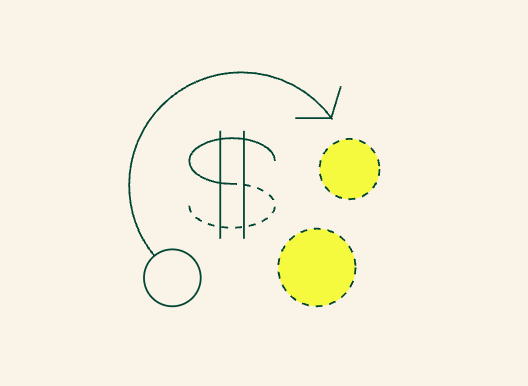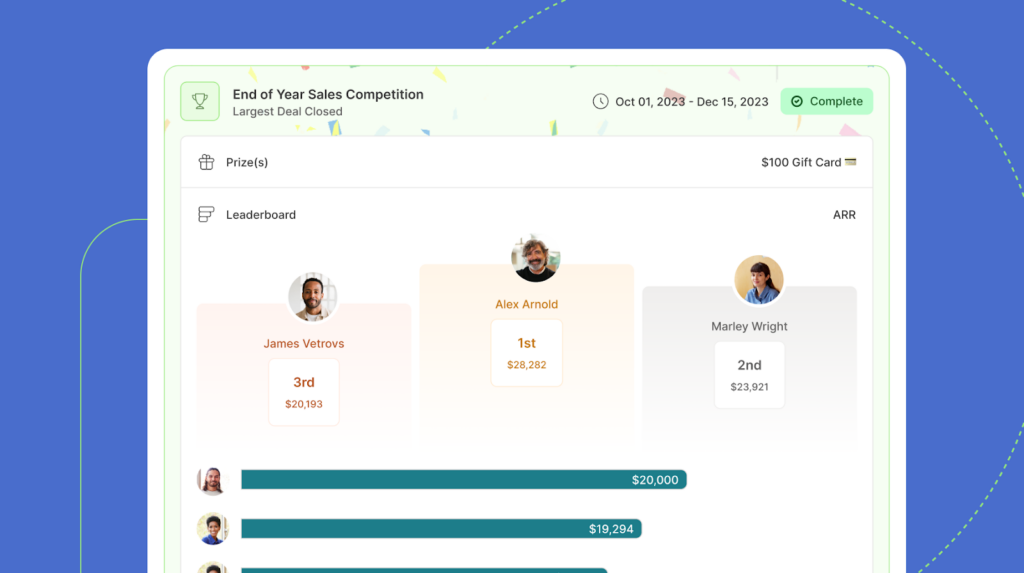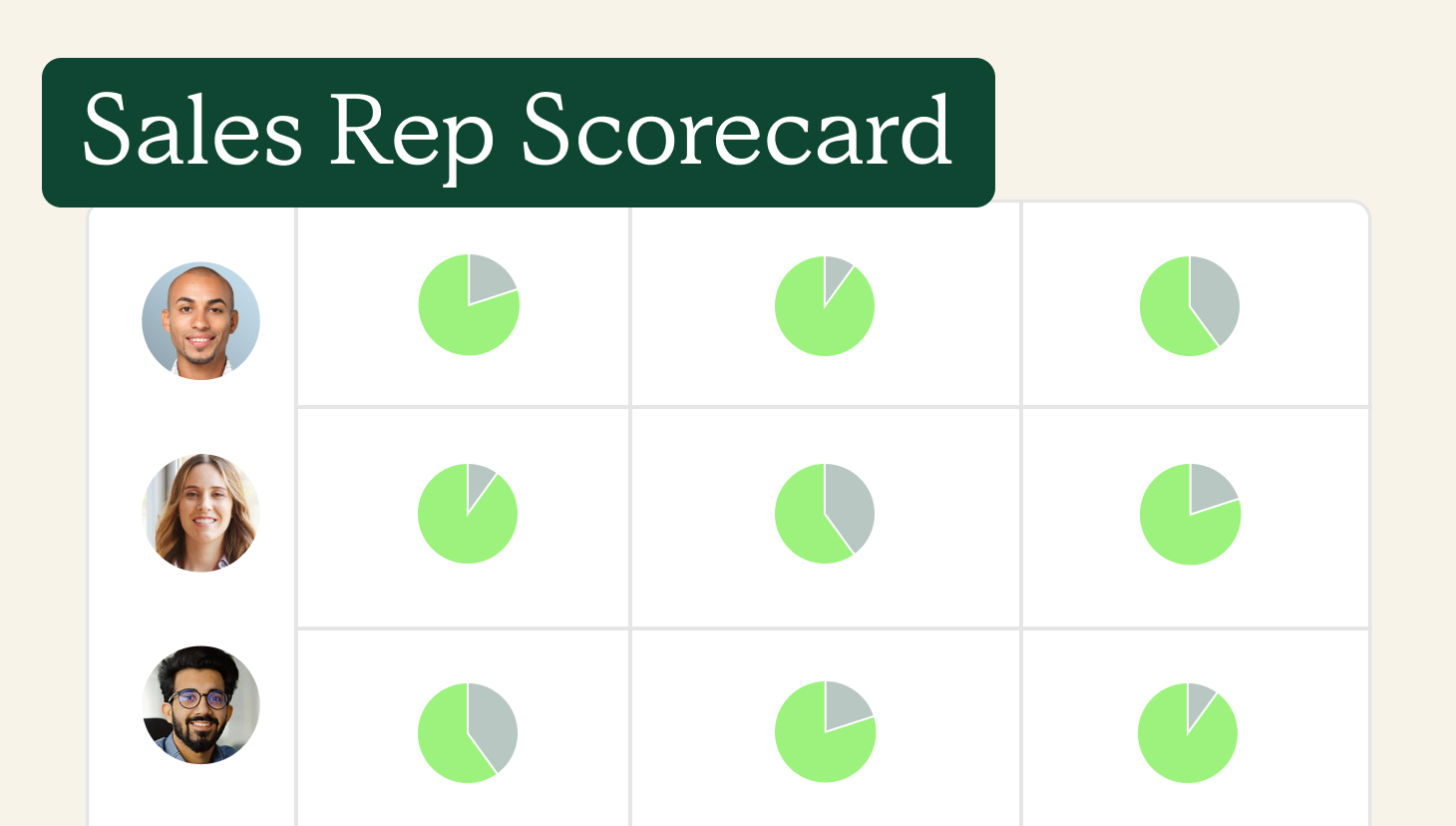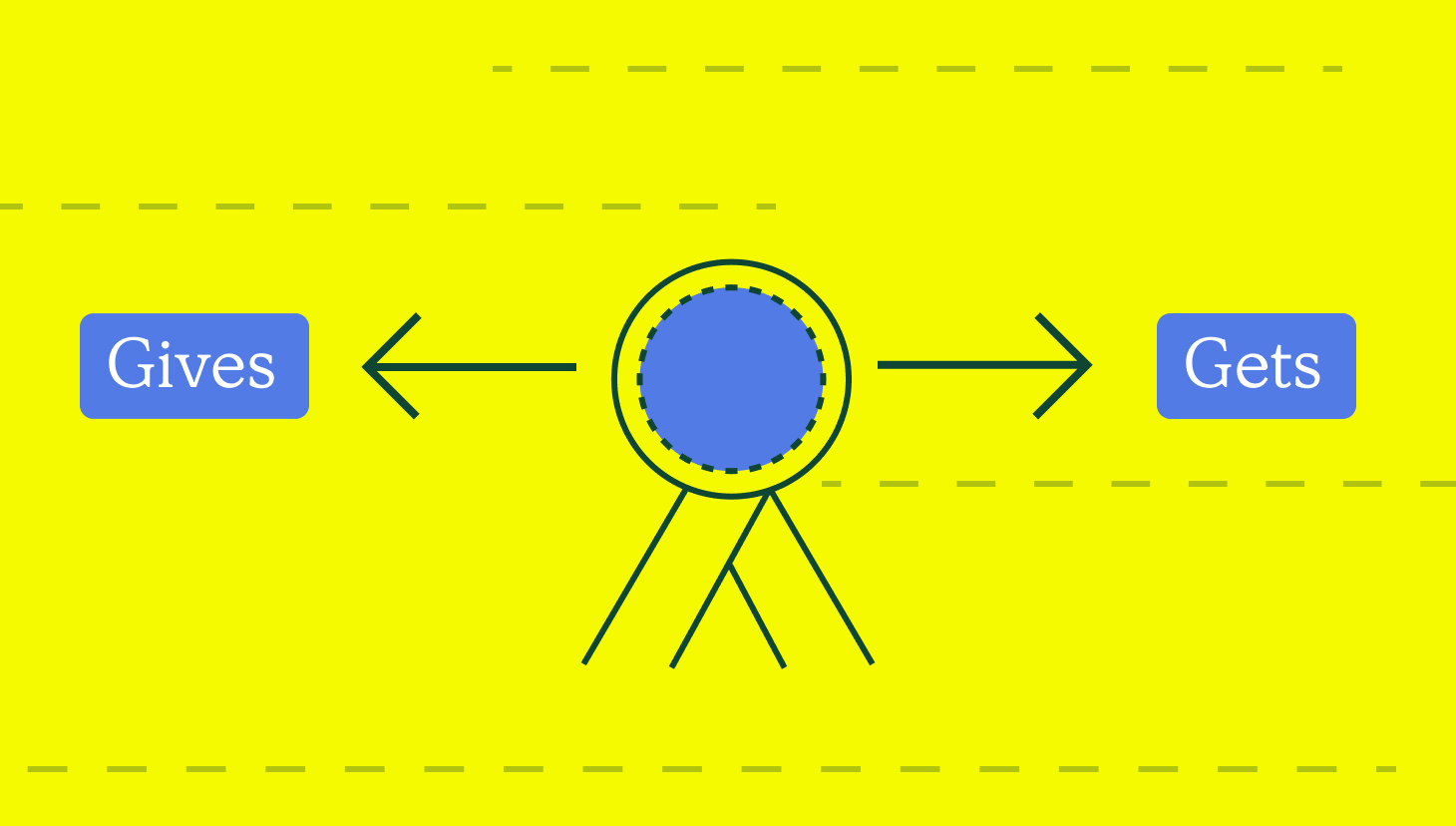Spiff program management refers to the design, strategy, and execution of SPIFFs (short for sales performance incentive fund formula) to maximize sales revenue during a set period. It’s a common tactic adopted by revenue teams with powerful outcomes.
Well-designed spiff programs can boost sales by up to 20%.
Remember that fast-start spiff that rewarded your sales team with a nice bonus for closing deals the first week of the quarter to distribute revenue?
It felt good, right?
While incentive designs like spiffs hold immense potential, poorly managed programs can lead to confusion, administrative headaches, and loss of appeal with your reps. In some cases, spiffs can hinder sales performance.
Effective program management and optimization are the keys to unlocking the power of spiffs.
This blog highlights best practices for implementing successful spiff programs, including clear communication, leveraging technology, and celebrating achievements.

Do SPIFs work?
Nearly every sales organization runs sales performance incentive funds (SPIFFs) throughout the year. But do they work? Learn when and how to use them effectively.
Take Me to ArticleBest Practices for Spiff Program Management
When designed strategically, we’ve established that spiff programs can be powerful tools for employee motivation and driving accurate results. But simply throwing out a spiff and hoping for the best isn’t a recipe for success.
The true magic lies in effective program management.
This section will delve into the key best practices for ensuring your spiff programs are well-organized and transparent, ultimately achieving the desired impact on your sales team and bottom line.
Follow these best practices to solidify your sales rewards programs.
Spiff Ideation
First, you’ll want to carefully craft out what the spiff is and what you hope it accomplishes.
- Align Spiffs with Business Objectives: Don’t create spiffs in a vacuum. Ensure they directly tie into your overall sales goals and strategic initiatives. Is there a product line that needs a push? Are you trying to close deals with a specific customer segment? Design your spiff to incentivize behaviors that directly contribute to achieving these goals.
- Simplicity is Key: Spiffs shouldn’t be complex puzzles for your sales team to solve. Keep the program guidelines clear, concise, and easy to understand. This includes clearly defining the target actions, outlining the reward structure, and setting achievable targets. A confused salesperson is a disengaged salesperson.
- Offer Compelling Rewards: The reward is what motivates the behavior. While financial incentives are common, consider other options as well. Think about what would truly excite your sales team. This could be exclusive experiences, additional paid time off, recognition on a leaderboard, or early access to new products.
Streamline commissions for your RevOps, Finance, and Sales teams
Design, track, and manage variable incentives with QuotaPath. Give your RevOps, finance, and sales teams transparency into sales compensation.
Talk to SalesCommunicating Program Details to the Team
The next thing to keep in mind is communication.
Your sales team needs to understand every aspect of the program, from its goals and objectives to the actions that will earn them rewards.
Here’s how to ensure your communication is transparent and leaves no room for confusion:
- Clearly define program goals and objectives: Right from the start, explain the “why” behind the spiff program. What are you hoping to achieve with this initiative? Is it to increase new product line sales, incentivize upselling, or shorten sales cycles? By understanding the program’s purpose, your team will be better equipped to align their efforts and maximize their earning potential.
- Outline eligible products, services, or activities: Don’t leave your sales team guessing what qualifies for a spiff reward. Clearly outline the specific products, services, or activities that trigger a payout. This could be closing deals above a certain value threshold, selling specific product bundles, or onboarding new customers within a set timeframe.
- Specify reward structures and timelines: Reward transparency is key to motivating participation. Detail the exact payout structure for achieving the defined goals. Will it be a flat fee, a commission percentage, or a tiered reward system? Additionally, communicate the timeframe for earning and receiving rewards. Knowing when they can expect to see the fruits of their labor keeps your team engaged and focused.
- Communicate program rules and expectations: Lay out any specific rules or limitations associated with the program. Are there any exclusions or blackout periods? Is there a minimum participation requirement? Review these details to avoid misunderstandings and ensure everyone is on the same page.
- Use multiple communication channels: Don’t rely on a single announcement to convey the message. Utilize a variety of channels to reach your sales team. This could include sending a comprehensive email outlining the program details, presenting the information during a sales meeting, and posting the guidelines on your company intranet for easy reference.
How to Set Up A Successful Spiff
Use spiffs to close a pipeline gap, improve specific behaviors or metrics, or test future comp plan changes.
Take Me to BlogLeveraging Technology for Efficiency
Third, remember that technology is your friend and can make tracking, communicating, and executing spiffs easier.
Here’s how QuotaPath empowers you to leverage technology for seamless spiff program management:
| Track with QuotaPath | QuotaPath seamlessly integrates with your existing CRM and sales automation platforms. This allows for real-time program management and performance tracking, including relevant sales data (e.g., deals closed, products sold, customer segments) against the defined spiff criteria. Drop these in whenever you need a boost, gain instant visibility into program performance, and eliminate the risk of human error. |
| Dedicated Spiff Management Features | Automate key tasks associated with Spiff programs, such as reward calculations based on pre-defined criteria, scheduling automated participant payouts, and generating detailed reports on program performance. |
| Automated and Adaptable Workflows for Efficiency | Automate key tasks associated with spiff programs, such as reward calculations based on pre-defined criteria, scheduling automated participant payouts, and generating detailed reports on program performance. |
| Transparency and Trust | QuotaPath is a centralized hub for managing spiffs and offers dedicated features designed to simplify spiff program administration. Create and manage multiple spiff programs simultaneously, set clear eligibility rules and reward structures, and track individual and team performance in real-time. |
By leveraging QuotaPath’s powerful features, you can streamline spiff program management, save valuable time and resources, and drive higher sales performance through a motivated and engaged sales team.

Celebrating Success and Rewarding Participants
Now for the fun part.
Remember, spiff programs aren’t solely defined by revenue-related sales success. Spiffs contribute to your team’s motivation, competition, and recognition culture.
For your spiff initiative to shine, you have to celebrate and reward your team in engaging ways.
Here are a few ideas to do so:
- Public Recognition: Don’t underestimate the power of a public “shout-out.” Acknowledge top performers at team meetings, company-wide announcements, or even social media posts (with their permission, of course!). This public recognition validates their hard work and inspires others to strive for similar achievements.
- Leaderboards and Gamification: Inject some friendly competition into your spiff program with leaderboards that showcase top performers in real time. Consider incorporating gamification elements like points, badges, or virtual trophies to add an extra layer of fun and motivation.
- Tiered Rewards: Structure your rewards program with different tiers based on performance levels. This incentivizes continuous improvement and allows everyone to feel a sense of accomplishment as they progress through the tiers.
- Experiences Over Things: While traditional gifts and merchandise have their place, consider offering unique experiences as rewards. Think weekend getaways, tickets to sporting events, or personalized training opportunities. These create lasting memories and demonstrate your genuine appreciation.
- Instantaneous Rewards: Positive reinforcement works wonders. Offer instant rewards, like gift cards or bonus commissions, to help you achieve specific milestones. This provides immediate gratification and fuels continued effort.
Use spiffs to foster a culture of collaboration and knowledge sharing. Recognize not just individual achievements but also team victories and instances where team members supported each other’s success. This reinforces the importance of teamwork and creates a positive and motivating environment.
By implementing these strategies, you can transform your spiff program from a transactional system into a powerful tool for boosting morale, driving engagement, and celebrating the achievements of your sales team.
7 Spiff Examples for your GTM Team
Ready for some examples to consider for the rest of the year?
Below are seven creative spiff ideas designed to incentivize desired actions, celebrate achievements, and cultivate a positive sales environment while ensuring your spiff program complements, not replaces, a solid compensation plan.
- Fast Start: Motivate your team to hit the ground running at the beginning of a quarter by offering a bonus commission (e.g., $100-$200) to the first X number of salespeople who close deals within the first week. This will jumpstart activity and set the tone for a strong quarter.
- Upsell & Cross-Sell: Encourage expanding customer value by rewarding salespeople who achieve the highest number of upsells or cross-sells within a specific timeframe. This metric could be tied to revenue generated from upsells/cross-sells or the number of successful upsells/cross-sells completed.
- Outbound Pipeline: Focus on building a healthy sales pipeline by rewarding the salesperson who adds the most outbound qualified leads to the CRM within a set period. This incentivizes proactive prospecting and ensures a steady flow of potential customers.
- Mid-goal Milestone: Break down larger sales goals into smaller, achievable milestones. Offer a tiered reward system in which salespeople receive a bonus (e.g., a gift card, or an extra vacation day) for reaching specific milestones toward their overall quota. This keeps them motivated and provides a sense of accomplishment as they progress.
- Retention: Customer retention is crucial for SaaS businesses. Recognize the salesperson with the highest customer retention rate within a specific period. This could be a bonus commission or a reward tied to the value of retained accounts.
- Onboarding: A smooth onboarding experience is critical to customer satisfaction. Reward the salesperson whose new customers score the highest customer satisfaction during onboarding. This incentivizes them to prioritize a positive onboarding experience.
- Teamwork: Create a team-based spiff to encourage collaboration and knowledge sharing. Offer a bonus or reward for the team that collectively achieves the highest sales target within a timeframe. This fosters a sense of camaraderie and motivates everyone to contribute to the team’s success.

Lessons Learned from Spiff Program Failures
Lastly, spiffs can be a game-changer for your sales team, but even the most well-intentioned programs can fall flat. Here are some key lessons learned from common spiff program failures to help you avoid these pitfalls:
- Misaligned Goals: Ensure your spiff program incentivizes behaviors directly contributing to your overall sales strategy. Don’t reward activity metrics that don’t translate to actual sales or long-term customer value.
- Unclear Communication: Clearly communicate all program details, including eligibility criteria, reward structures, and timelines. Ambiguity breeds confusion and frustration among your team.
- Unrealistic Targets: Setting unattainable goals can quickly demotivate your team. Balance ambition with achievability to ensure everyone has a fair shot at earning rewards.
- Overly Complex Programs: Keep your spiff program clear and easy to understand. Complex rules and calculations will create confusion and discourage participation.
- Lack of Transparency: Maintain transparency throughout the program. Share updates on leaderboards regularly and ensure everyone understands how rewards are calculated and awarded.
- One-Size-Fits-All Approach: Cater to individual preferences whenever possible. Offer various reward options to appeal to different motivators within your team.
- Short-Term Focus: While spiffs can provide a quick boost, consider the importance of long-term goals. Integrate your spiff program with your overall compensation plan for a holistic approach.
- Neglecting Recognition: Rewards are important, but take into account the power of public recognition. Celebrate achievements and acknowledge individual and team contributions.
- Poor Measurement and Tracking: Track key metrics to measure the effectiveness of your spiff program. Analyze data to identify what’s working and adjust accordingly to optimize future iterations.
By learning from these common pitfalls, you can design a spiff program that effectively motivates your team, drives desired sales behaviors and contributes to overall sales success.
Try QuotaPath for free
Try the most collaborative solution to manage, track and payout variable compensation. Calculate commissions and pay your team accurately, and on time.
Start TrialUse QuotaPath to Simplify Your Spiff Program Management
We’ve explored the power of creative spiff programs to incentivize your team, celebrate achievements, and foster a positive sales environment. However, remember, spiffs are most effective when they complement, not replace, a solid base compensation plan.
You can design a spiff program that motivates your team and drives results by avoiding common pitfalls like misaligned goals, unclear communication, and unrealistic targets. Remember to prioritize clear communication, transparency, and various reward options to cater to different preferences. Track your program’s effectiveness and integrate it with your overall sales strategy for a holistic approach.
Implement spiffs with automated tracking
QuotaPath, the most adaptable commission tracking software on the market, offers a comprehensive sales performance management platform to streamline spiff program administration.
Our user-friendly interface makes creating, managing, and tracking your spiff programs easy. It ensures clear communication, real-time updates, and effortless reward distribution. Explore QuotaPath today and see how we can help you design and implement a spiff program that delivers actual results.



